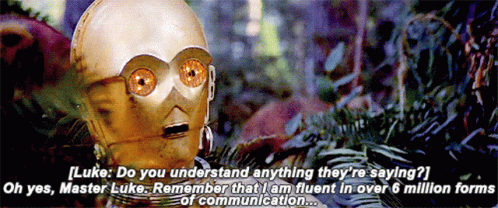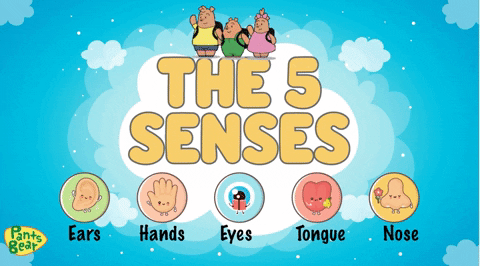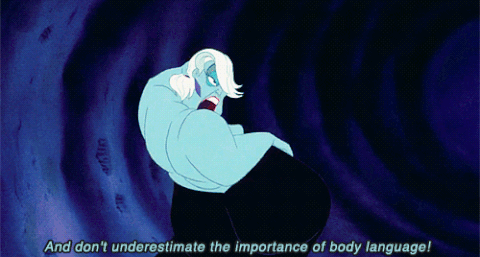AuthorHi, I'm Ray Evans. I'm a certified copyeditor and proofreader. Archives
September 2023
Categories |
Back to Blog
Hey there, word-wranglers and story-spinners! It's your friendly neighborhood proofreader and copyeditor, here to help you navigate the treacherous waters of scene-setting like a literary Christopher Columbus (minus the whole discovering-new-continents thing). Picture this: It's you. Deep in the throes of your latest literary masterpiece when suddenly, you hit the dreaded...gasp...description conundrum! How do we create a setting that's more captivating than a hypnotist at a sleep clinic, without turning our tale into a five-volume encyclopedia? Here’s how! Step One: Sensory Salsa Dancing 🕺🏻The first rule of setting the scene is to create a sensory fiesta for your reader. Don't just stick to the ol' humdrum sights and sounds. Get up close and personal with your characters' senses, and let your reader experience the world you're building. Is the rain a gentle caress, or does it pelt them like a thousand icy needles? Can they smell the tangy aroma of oranges wafting from a nearby grove, or is it the pungent scent of a dubious alleyway? Don't be afraid to tango with taste, touch, and even temperature! A sensory smorgasbord will leave your reader hungry for more. Step Two: Meticulous MinimalismNow, you don't want your reader drowning in an ocean of adjectives like a hapless, wordy Titanic. To avoid this, think of description as a fine wine: too little and you leave your reader parched, too much and they'll be stumbling through the story in a stupor. Be selective with your words, and let your reader fill in the gaps with their imagination. Remember, brevity is the soul of wit, and also the key to keeping your reader's attention. Step Three: Mood Swings and Tonal TidbitsThe art of setting the scene isn't just about painting a pretty picture; it's about setting the emotional stage for your characters to play upon. Description can be a powerful tool in shaping the mood and tone of your story. Is your scene tense and suspenseful? Use sharp, staccato phrases to keep your reader on the edge of their seat. Or perhaps you're penning a dreamy, romantic interlude? Try using soft, flowing language to sweep your reader off their feet. Step Four: The Dynamic Duo - Action and DescriptionA well-executed description can be as thrilling as a high-speed car chase or as enchanting as a moonlit waltz. But how do you strike the perfect balance between description and action? The answer lies in blending the two like a literary smoothie. Weave descriptions into your action, and let the setting become a living, breathing part of your story. The rustle of leaves in the wind can mirror a character's mounting unease, and the golden glow of a sunset can cast a warm light on a tender moment. By intertwining action and description, you'll create a dynamic, immersive world that will keep your reader spellbound. Putting it all togetherSo there you have it, my aspiring scribes! By utilizing sensory detail, practicing minimalism, setting
the mood, and blending action with description, you'll be able to create settings that transport your readers like a first-class ticket on the Literary Express. Now, go forth and conquer the written word, but remember: with great description comes great responsibility. Happy writing!
0 Comments
Read More
Back to Blog
Greetings, dear authors, word wizards, and punctuation aficionados! In the grand pantheon of literary blunders, punctuation pitfalls rank right up there with the most perilous traps that lurk in the shadows, just waiting to ensnare unsuspecting authors. Fear not, for I will act your grammar sherpa, your trusty guide, in this romp through the thicket of prose, am here to help you avoid these treacherous snares and emerge victorious in your battle with the written word! 1) The Apostrophe ApocalypseAh, the humble apostrophe, a small but mighty mark that has flummoxed even the most seasoned of writers. "It's" or "its"? "You're" or "your"? Worry not, my dear friends, for I shall illuminate the path to apostrophic enlightenment. Remember: "it's" is a contraction for "it is," while "its" is the possessive form of "it." Similarly, "you're" stands for "you are," and "your" signifies possession. So, whenever you're in doubt, mentally replace the word with its full form and see if it still makes sense. If not, switch gears and try the other option. 2) Comma ConundrumsThe comma, that tiny scamp, can be a source of great consternation for many a writer. Misplacing it can lead to confusion, misunderstanding, the occasional bout of unintentional hilarity, or even bad book reviews. Here are a few tips to keep your commas in check: a. The Oxford Comma Controversy: The Oxford comma, also known as the serial comma, is used immediately before the coordinating conjunction (usually "and" or "or") in a list of three or more items. Though its usage is a matter of hot debate, I say, why not play it safe and use it to avoid ambiguity? b. Introductory Phrases: If you start a sentence with an introductory phrase or clause, separate it from the main clause with a comma. For example, "After finishing his breakfast, the lion went back to sleep." See how civilized our lion friend is with his proper comma usage? 3) The Exclamation Point ExtravaganzaExclamation points are like hot sauce: a little goes a long way.
Overusing them can make your writing seem overwrought or melodramatic. Use them sparingly and reserve them for moments of genuine surprise, excitement, or strong emotion. And please, for the love of all that is grammatically sacred, avoid using multiple exclamation points in a row! One will do the job just fine. In conclusion, my dear aspiring Hemingways and Austens, punctuation need not be the bane of your literary existence. With a little vigilance, a dash of humor, and the guidance provided in this exploration of common punctuation pitfalls, your prose will soon be the toast of the literary world! Happy writing!
Back to Blog
Are you ready to embark on the journey to create more engaging and believable characters through dialogue? Well, gather around, my dear word wizards, and let's explore how you can write the most dazzling, convincing dialogue for your characters while avoiding the pitfalls of caricatures and stereotypes. Listen to the Music of SpeechPeople have their unique ways of talking, don't they, Sparky? You need to eavesdrop on real conversations to understand the nuances and rhythms of everyday speech. Pay close attention to the hesitations, interruptions, and idiosyncrasies of how people communicate. And remember, nobody's perfect – natural dialogue isn't grammatically flawless. Keep it SnappyNobody wants to read a meandering soliloquy (unless you're Shakespeare, and even then…). So, keep your dialogue brief and to the point. Make your writing concise, and let your reader's imagination do the heavy lifting! Give Each Character a Distinct VoiceCharacter development is an essential aspect of fiction writing. Each character should have their unique voice. Consider how your character's background, education, and personality will affect their speech patterns. Avoid blending voices – you don't want Prince Harry to sound like John Falstaff! Write Accents and Dialects with RespectAs you venture into the world of dialects and accents, be cautious, my dear author. Balance authenticity with readability, and steer clear of phonetic spelling. Instead, sprinkle your dialogue with a few choice words or phrases that capture the essence of the dialect without going overboard. Show, Don't TellThe words spoken between characters should serve as a window into their soul, you know what I mean? Like when Anthony Blanche tells a joke, it gives you a glimpse into his innermost thoughts and feelings. That's what great dialogue is all about, revealing a character's emotions through their words and actions, instead of just flat out telling the reader how they feel. Master the Art of SubtextAs the great philosopher John Keating once said, "No matter what anybody tells you, words and ideas can change the world." Subtext is the art of saying one thing while meaning another – it's the unsaid emotions and thoughts that lie beneath the dialogue. Master the art of subtext, and your characters will come alive with complexity and depth. Beware of Dialogue ClichésClichéd dialogue can drag down a brilliant story like an anchor. Instead of falling back on overused phrases and worn-out expressions, strive for originality and freshness in your dialogue. Challenge yourself to invent new ways for your characters to communicate – it's like sculpting with words! Edit, Edit, Edit!Finally, after you've written your dialogue, it's time for a little editing.
Read your dialogue aloud to see how it sounds. Trim unnecessary words, make sure each character's voice is consistent, and pay attention to the rhythm of the speech. Don't be afraid to be brutal – good writing is rewriting, after all. And there you have it, my dear authors, and make your dialogue sing with authenticity and character. Happy writing!
Back to Blog
Worldbuilding can make or break your sci-fi story. You've been given a blank canvas, and they expect you to paint the Mona Lisa! Where do you even begin? But, have no fear! I've got a few tricks up my sleeve that'll make your worldbuilding as real as the one outside your window or Shire or whatever crazy place you're in. So grab a pen and paper, and continue breaking down the steps to creating a believable world for your sci-fi or fantasy novel. Spice It Up with LanguagesHave you ever noticed how many accents there are in New York City? Well, imagine how many languages you could have in an entire galaxy! Develop a few unique phrases or words to sprinkle throughout your story. It'll make your world feel more alive and add some flavor to your dialogue. Integrate Your CharactersSo, you've got this fantastic world with complex societies, but who lives there? The mailman? The dog walker? No! Your characters! Make sure your characters are shaped by their world, and their actions impact it in return. We want them to feel like a natural part of the scenery, not just tourists passing through. Remember the Small StuffYou know what's amazing about a cup of coffee? It's the little things: the aroma, the warmth, the steam rising from the mug. The same goes for worldbuilding. Focus on the small details - the smells, the sounds, the way the sun sets - and your readers will feel immersed in your world. Stay Consistent (and keep notes)Ever been to one of those restaurants that serve sushi, pizza, and burritos?
Yeah, me neither. Consistency is key. Your readers need to feel like they're in a coherent world, so take notes on your creations and characters and keep track of your decisions. Trust me; it'll save you from future headaches. In conclusion, creating a believable world for your fantasy or sci-fi novel might seem like a daunting task, but with these eight tips, you'll be well on your way to crafting a universe as expansive as your imagination. So, buckle up, put your creative caps on, and dive into the infinite realm of possibilities!
Back to Blog
1) Find Your Freshest Ingredients (Idea)Like any good salsa, a story starts with fresh, quality ingredients – in our case, ideas. Now, I don't mean you have to come up with the plot equivalent of a unicorn playing a harpsichord on the moon. No, the secret is in taking the everyday, the familiar, and adding your own unique twist. Think of it like this: tomatoes are common, but toss in a dash of smoked paprika and suddenly you've got a taste sensation. 2) Dice Those Characters (Developing Characters)Characters are the onions of your storytelling salsa. You want to dice them up, expose all their layers. Make them real, make them relatable, but most importantly, make them interesting. You don't want some watery, bland onion ruining your salsa, right? Same goes for characters. Give them quirks, give them motives, give them life. It's the difference between a forgettable crudité and a fiesta in your reader's mouth. 3) Turn Up the Heat (Conflict)What's a salsa without a little heat? Conflict, folks, is your jalapeno. It fires up your story, gives it that edge-of-the-seat, can't-stop-reading spice. But remember, not everyone likes their salsa mouth- meltingly hot. Balance is key. Enough conflict to keep things interesting, but not so much it overwhelms the other flavors. 4) Blend it All Together (Plot)Plot is where all the ingredients of your storytelling salsa come together. This is where you blend, mix, and season until you've got a narrative that's smooth, satisfying, and just the right amount of spicy. Remember, it's not just about tossing things together willy-nilly. You're a chef, a maestro of the written word. Every twist, every turn, every character decision should be as deliberate as your choice of cilantro or parsley. 5) Sample and Adjust (Revision)Even the best chefs taste and adjust their dishes. Your first draft? That's your initial mix. Now it's time to sample. Too bland? Add conflict. Too confusing? Clarify that plot. Characters falling flat? Dice 'em up and add some flavor. This step, my friends, is where good stories become great stories. A Developmental Editor could help you out with this. 6) Serve it Up (Publishing)Finally, it's time to dish out that delicious storytelling salsa to your eagerly awaiting readers. Whether it's through traditional publishing, self-publishing, or serializing your work online, don't let your salsa sit in the fridge. Get it out there, let people taste it, and brace yourself for the applause (and constructive criticism - a chef's work is never done, after all). ConclusionIn conclusion, authors, remember: writing is like creating the perfect salsa. It takes fresh ingredients,
patience, and a dash of creativity. But when all those flavors come together? Chef's kiss You've got yourself a story readers won't be able to resist. So get out there and start cooking!
Back to Blog
Hey there, word wizards! Have you ever wondered, what's the deal with worldbuilding? I mean, you've got this entire universe to create, but where do you even start? Well, wonder no more! Today, we're going to break down the steps to building a believable world for your fantasy or sci-fi novel - and you won't even need a 3D printer! Here's a list of fantastic tips to make your fictional world feel as real as the one outside your window (or spaceship, for that matter). Establish the Rules (but don't go overboard) It's like that time I tried to figure out the rules of cricket - no one can agree on what they are! In your fantasy world, you've got to have some basic laws of physics, magic, or technology. But remember, don't go into too much detail - we don't want a scientific manual; we want a story! Draw a Map (even if it's just for you)You know, I always get lost in parking lots. But in your fictional world, you don't want your readers getting lost. A map can help guide your writing and keep you consistent. Plus, it's always fun to doodle while you're pondering your next plot twist! Create Cultures and Societies What's the deal with elves, orcs, and dwarves? Can't we all just get along? In your world, create diverse and unique cultures and societies. It's a chance to explore new ideas, beliefs, and ways of life - without ever having to leave your desk! Develop a HistoryYou know, history is just a bunch of stuff that happened, and then they wrote it down.
But in your world, you get to write the history! Consider creating a timeline of major events, conflicts, and alliances to give your world depth and richness. And that's all for now! Stayed tuned for Part 2 this Thursday!!
Back to Blog
Listen up, aspiring wordsmiths and literary geniuses. It's time to embark on a writing journey so stupendous, you'll wonder why you didn't think of it sooner. Put your pens to paper, your fingers to the keyboard Appeal to the SensesYa know what really gets me going? Engaging my senses! Make your readers feel like they're there with the characters by describing how things look, smell, sound, taste, and feel. When you add in these sensory details, it's like they've entered a whole new world, one Jumanji board game at a time. Don't just say that it's a beautiful day; describe the warmth of the sun on their skin, the smell of fresh-cut grass, and the sound of children laughing in the distance. Smellavision hasn't been invented yet, so it's up to you to create an immersive sensory experience. Use strong verbsGood golly, Miss Molly! Strong verbs are the lifeblood of showing, not telling. Ditch weak verbs and adverbs in favor of potent, evocative verbs that give your readers a front-row seat to the action. The burglar didn't simply "run" away; he "sprinted" or "bolted" or even "scrambled" like a startled cat(imagery and similes also help too). Let dialogue do the talkingNobody knows how to reveal character and emotion better than the characters themselves. Craft meaningful, snappy dialogue that tells readers about your characters without needing a neon sign that says "Sad" or "Angry." If your character is seething with rage, let their dialogue convey it with clipped sentences, expletives, or biting sarcasm. Employ body language and facial expressionsOh, the nonverbal dance! Facial expressions and body language are the unsung heroes of showing emotion. You don't have to say that a character is nervous if their hands are fidgeting. A coy smile speaks volumes about flirtation without saying a word. Readers love deciphering the unspoken cues, so let them have at it. Show emotion through actionActions, dear writers, speak louder than words. Let your character's actions reveal their emotions
without explicitly telling the reader how they feel. A character might "slam" a door in frustration, "tremble" in fear, or "squeeze" someone's hand in reassurance. So there you have it, folks! The key to writing vivid scenes is to "show, don't tell." With this guide in hand, you'll soon be crafting tales that'll take your readers on a magical journey through the realm of imagination.
Back to Blog
Ladies and gentlemen, boys and girls, and writers of all ages – gather 'round, for I have a tale to tell! A tale filled with suspense, intrigue, and yes, even a dangling participle or two. But fear not! For, within this thrilling adventure, you shall discover the true importance of grammar and how it shapes the very fabric of your literary endeavors! Chapter One: A Punctuation Predicament 😱Once upon a time in a land filled with adjectives and adverbs, our brave protagonist – a humble writer – toiled away at their manuscript, weaving a rich tapestry of characters, settings, and plot twists. But alas, a diabolical villain threatened to undo all their hard work – the dreaded Punctuation Predicament! Commas, semicolons, and em dashes run amok, leaving readers confused and lost in a sea of run-on sentences and disjointed clauses. Would our hero's masterpiece be doomed to obscurity? "Never fear," cried the gallant proofreader, swooping in to save the day. "For I shall guide you through the treacherous waters of punctuation, ensuring that your story is not only clear but a joy to read!" And so, our hero learned the importance of proper punctuation, realizing that clarity is crucial in conveying their tale to eager readers. Chapter Two: The Tense Tangle!!Past, present, and future tenses swirled and collided, muddying the narrative waters. Would our hero's story become a jumbled mess of temporal inconsistencies? Enter the valiant copyeditor, armed with an arsenal of grammar knowledge, ready to untangle the twisted web of tenses. "Let us embark on a journey through time!" the copyeditor declared, guiding our hero through the intricacies of tense agreement. "Together, we shall ensure that your tale remains consistent, engaging, and easy to follow!" And so, our writer triumphed over the Tense Tangle, and their story flowed smoothly, enchanting readers far and wide. Chapter Three: The Syntax SiegeBut wait, dear reader, for the final challenge still lay ahead – the terrifying Syntax Siege! Passive voice, misplaced modifiers, and awkward phrasing threatened to drag our hero's story into the depths of mediocrity. Could our hero conquer this final foe? Undeterred, the proofreader and copyeditor joined forces, a dynamic duo of grammatical prowess! "We shall vanquish the Syntax Siege," they proclaimed, "and your story shall shine like a beacon of literary excellence!" And thus, with the aid of their trusted allies, our hero emerged victorious. Their story, polished and refined, captivated the hearts and minds of readers everywhere, and they all lived happily ever after. Epilogue: The Moral of the StorySo, my fellow authors, heed this cautionary tale!
For, in the realm of storytelling, grammar is not a mere afterthought, but a vital component of your story's success. With the help of skilled proofreaders and copyeditors, your manuscript will be transformed from a diamond in the rough to a gleaming gem, ready to dazzle readers the world over. And remember, in the immortal words of the great Mel Brooks, "If you're quiet, you're not living. You've got to be noisy and colorful and lively." Let your grammar be as lively and colorful as your story itself, and together, we shall create literary magic!
Back to Blog
Greetings, my delightful scribblers and storytellers! 'Tis I, Ray Evans, your trusty proofreader and copyeditor, here to bestow upon you the knowledge of creating characters that'll make your readers' hearts go pitter-patter. So, buckle up, buttercups, because we're about to take a wild ride through the world of character creation! 1: Embrace the FlawsNobody's perfect – not even our beloved characters. Embrace their flaws and imperfections to create well-rounded, multi-dimensional beings. Perhaps your protagonist has a penchant for procrastination or your antagonist has a soft spot for kittens. Whatever it is, your characters' weaknesses will make them human, lovable, and relatable. 2: A Dazzling BackstoryWho doesn't love a good origin story? Craft a backstory for your characters that will leave your readers intrigued, invested, and hungry for more. Whether it's a tragic past or a mysterious heritage, a character's history can provide depth and motivation, adding a rich tapestry to your narrative. 3: Goals and Motivations!Your characters need something to aspire to – a driving force that propels them through your story. Be it love, revenge, self-discovery, or saving the world, their goals and motivations must be clear and believable. The readers should feel compelled to cheer your characters on, as if they're witnessing a thrilling game of literary Quidditch! 4: Dynamic CharactersCharacters, like people, are social creatures. Their relationships with one another can make or break your story. Develop a diverse cast with intricate connections, rivalries, and alliances that evolve and grow throughout the narrative. Love, friendship, envy, and betrayal – these are the emotions that fuel compelling stories and keep your readers on the edge of their seats. 5: Show, Don't TellAllow your characters to reveal themselves through actions and dialogue, rather than relying on lengthy descriptions or explanations. Show your readers who your characters are, rather than telling them. It's like the difference between watching a movie with vivid, colorful visuals and one with a narrator droning on about the characters' traits – which would you prefer? 6: Growth and ChangeJust like our dear friend, the caterpillar, your characters must undergo transformation throughout your story.
Whether they learn valuable lessons or suffer great loss, their experiences should leave a lasting impact on their personalities, beliefs, and motivations. This metamorphosis will not only make your characters more dynamic but also resonate with your readers. In conclusion, my talented word-weavers, remember that crafting compelling characters is an art form. Allow your imagination to run wild and free, and let your characters guide you on a journey of discovery. As your characters come alive on the page, they'll capture the hearts and minds of your readers, and you'll have created a literary masterpiece that will stand the test of time. |
 RSS Feed
RSS Feed
































